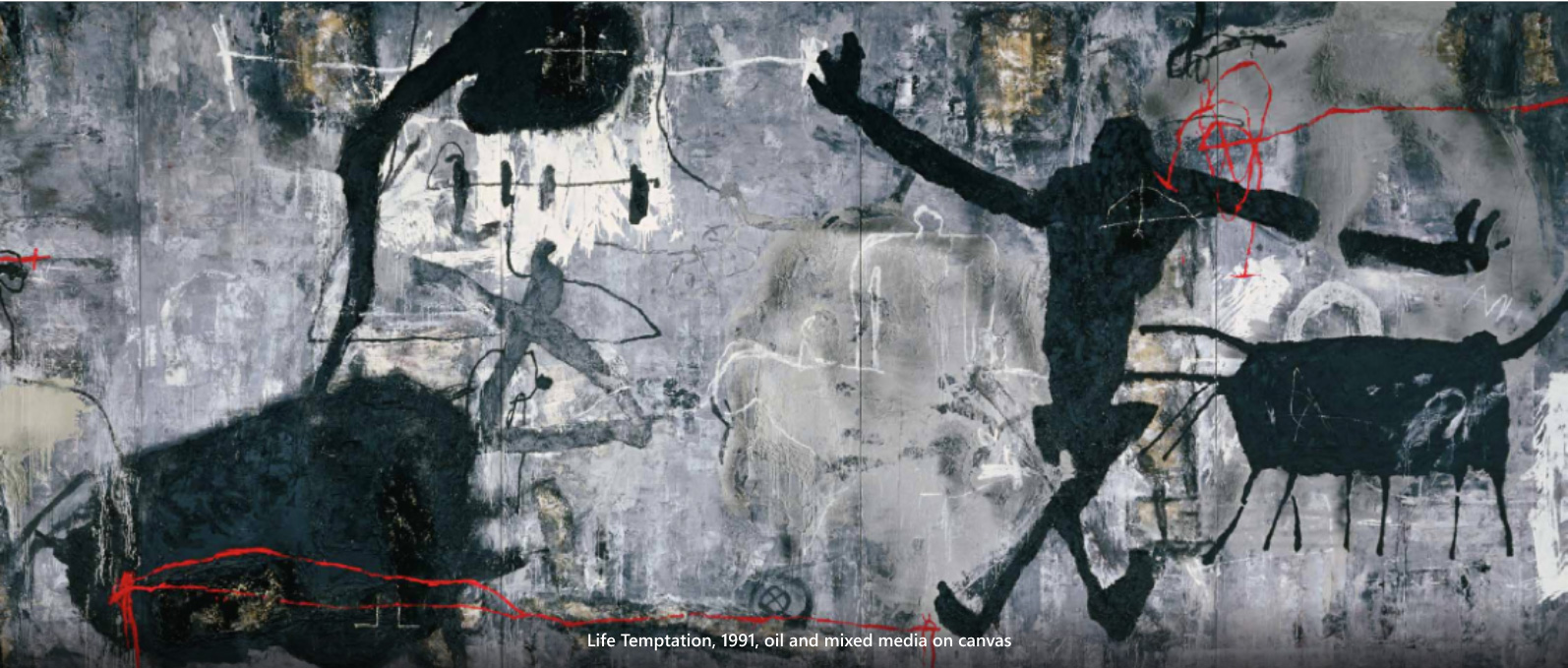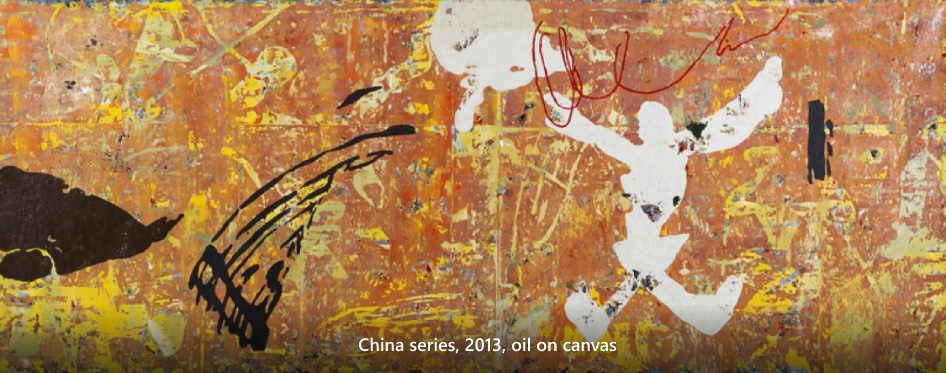
ZHOU BROTHERS
As one of the most important contemporary artists duo, they create unique, profound, and powerful works through the collaboration of the two. Their contribution to late 20th century’s contemporary art is unneglectable, and their works have made the top rankings of global living artists. Together, the Zhou Brothers have led an artistic career for over 40s, creating a legend of art history and American dream.
In 1985, at the age of 33 and 28 respectively, the Zhou Brothers reached the peak of contemporary art in China with their abstract paintings, and were invited to put on a solo exhibition in Chicago. Their first exhibition immediately attracted the attention of the Chicago art community. Chicago Sun-Times art critic Margaret Hawkins described the show as follows: “The whole thing is a pattern of ritual celebration that owes nothing to Renaissance perspective or the Western tendency toward narrative.” The Zhou Brothers style not only belongs to the abstract sphere which the west is familiar with, it also carries the mysterious vibe of ancient China’s prehistoric civilization. After the exhibition, the Zhou Brothers were followed by commercial success. By 1990, their exhibitions had taken place in high end galleries and art museums around the world.



“People think we have the same idea and bring harmony to it before coming to the canvas. That’s wrong. The value of the collaboration is that it opens up things that couldn’t happen in any other way.”

Unlike their early paintings, where struggles and fights were shown clearly on the canvas; their new works show a uniform, calm yet elaborate style, with all movements hidden beneath the surface. As they say, they now seek a more intangible sense of movement driven by an invisible flow. Entering the fourth decade of their collaboration, this may mark the successful maturation of their personal philosophy of “Feelingism.” From the paintings, it seems that they have made their choices in life and are satisfied with their answers.

In 1973, The Zhou Brothers created their first painting together, titled “The Wave,” marking the beginning of their joint artistic career.
In the late 1970s, they innovatively took inspiration from ancient art, and created a series of work that sets its background with the primitive Huashan rock paintings with a rich ethnic style. In 1985, the Zhou Brothers Solo Exhibition was held at the National Museum of Art, showcasing 180 pieces of art.

ARTISTIC MILESTONES
1986
1987
1990
1991
1994
The Chicago International Art Exhibition commissions the Zhou Brothers to create a public installation. They create Wind·Wisdom.
1995
1996
1997
1998
2000
2001
2002
2003
2004
In the same year, they purchased an 85,000-sq/ft warehouse building on 35th Street to establish the ZhouB International Institute of Art.
1998
2005
2006
2007
2011
2014
2015

During their painting process and live performances, the canvas becomes a battlefield of their fierce fights and struggles. It is amazing that in each battle, the brothers will mutually reach a singular moment of peace, or yield a truce at the end. To watch the residues left on their canvas is to experience “Tao”, which Laozi describes in his


“The Way produces one, one produces two. The two produce the three and the three produce all things. All things submit to yin and embrace yang. They soften their energy to achieve harmony.”

To date, the Zhou Brothers have performed at various important international occasions. At the invitation of President Obama, President of the People’s Republic of China Hu Jintao paid a state visit to the US from January 18 to 21 in 2011. During the visit, President Obama prepared a meaningful gift to President Hu. The artists invited to create the gift are the Zhou Brothers.
The gift was a painting titled “Eight U.S. Presidents and the Great Wall” The main body of the painting was the eight U.S. presidents starting from Nixon, with the Great Wall in the background – these choices and compositions are metaphors of the development of China and US relations. Every detail of the painting is as much of a profound political symbol as it is a reflection of the unique artistic style of the Zhou Brothers.
The work had the entire White House in awe. The Zhou Brothers had created a gift that is truly unique, which had not only left a profound impression in Hu’s visit, but is also a lasting testament to the China–US relations.


“To the Zhou Brothers: Thank you for the inspired painting we presented to President Hu!” -- Barack Obama

The description of the documentary says, in order to pay tribute to the Chinese President Hu, Obama presented a diplomatic gift of oil painting, and the creator of which are Chinese American artists Zhou Brothers from Chicago, where Obama’s home is. The elder brother Shanzuo Zhoushi told reporters that in December of the last year, they received a call from the White House, proposing for the upcoming visit of Hu Jintao a painting. The theme of oil painting was decided by the White House, while the painting’s content was conceived by the Zhou Brothers alone: the eight US presidents since Nixon’s ice breaking visit to China were chosen for the painting, in


“We use only the simplest strokes to capture the essence of the eight U.S. presidents. Each portrait is loaded with primitive codes from the dawn of human civilization, and this is the very own style that we’d established. Similarly, the composition of the painting, positioning of each presidents, are decided after careful consideration.”


